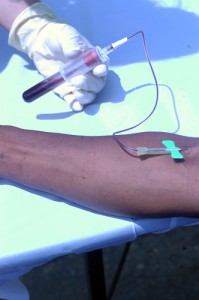Rent’s 20th Anniversary: 7 Things to Know About HIV/AIDS Now
 Last week, I attended a performance of Rent’s 20th Anniversary Tour. The musical follows a year in the lives of several artists, some of whom are afflicted with HIV/AIDS. In 1996, the future was grim for those who had the disease.
Last week, I attended a performance of Rent’s 20th Anniversary Tour. The musical follows a year in the lives of several artists, some of whom are afflicted with HIV/AIDS. In 1996, the future was grim for those who had the disease.
Over the years I’ve seen Rent on Broadway, on tour, and on the big screen. Reflecting on the passage of time, I wondered how HIV/AIDS has changed since Rent’s premiere. Here are seven things I found out with a little cyber-digging.

- In 1996, the average life expectancy, post diagnosis, was 18 months. Today, patients can live decades after diagnosis, however, many experience side effects from the medication, including early aging and cancer.
- In 1996, 23 million people worldwide were living with HIV. In 2015, that figure had grown to 36 million. In the United States, there were 223,000 people living with HIV in 1996 and in 2012 there were 2 million (most-recent CDC measurement).
- Between 2000 and 2015, new infections have fallen by 35 percent. Deaths have fallen 28%. This sounds promising, but keep reading.
- In 2008, after an encouraging period of decline, JAMA reported that HIV infection in gay men was increasing.
- In 2014, major provisions of the Affordable Care Act went into effect, one of which barred insurers from discriminating against customers with pre-existing conditions, such as AIDS.
- The CDC reports that 1 in 8 people who are living with HIV in the United States do not know it. The World Health Organization (WHO) reports the worldwide figure as 54%
- In July 2016, the CDC’s National HIV/AIDS for the United States report was updated to 2020. Its goals are to increase the percentage of people who know they are infected, to decrease the number of new infections yearly, and reduce the death rate from HIV/AIDS, among a number of other goals.
There you have it. Seven things to know about HIV/AIDS today.
Twenty years after Jonathan Larson’s musical premiered, education, testing, and treatment for HIV/AIDS has greatly improved. Some say the disease will be eradicated by 2030, but that’s a long time from now, especially if you’re at risk of contracting HIV, or if you have already been infected.
The CDC recommends the use of condoms, avoiding risky behaviors, and sometimes, preventative medication. Getting tested is important, too. The CDC recommends that everyone between the ages of 13 and 64 be tested at least once.




Leave a Reply